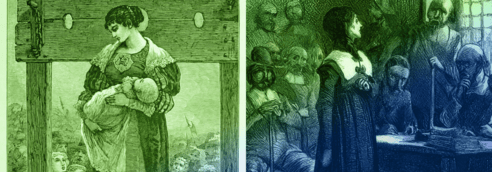Overview
In this lesson, students will compare and contrast Nathaniel Hawthorne’s written work concerning 2 women: Hester Prynne and Anne Hutchinson. Contemplating his language, tone, and word choice, students will consider Hawthorne’s perception of the phrase “all men are created equal” in relation to the meaning intended by the Founders. Students will write an analysis essay showing they can critically analyze and cognitively empathize with what they have read. They will draw conclusions and consider nuanced interpretations of Nathaniel Hawthorne’s viewpoint in 2 texts by him. Finally, students will reflect on the ways that Hawthorne’s writing is evidence of the difficulties applying the principles of the Declaration equally and universally at the time of the Founding and onward.
This lesson is the 2nd in a 4‑lesson series.

